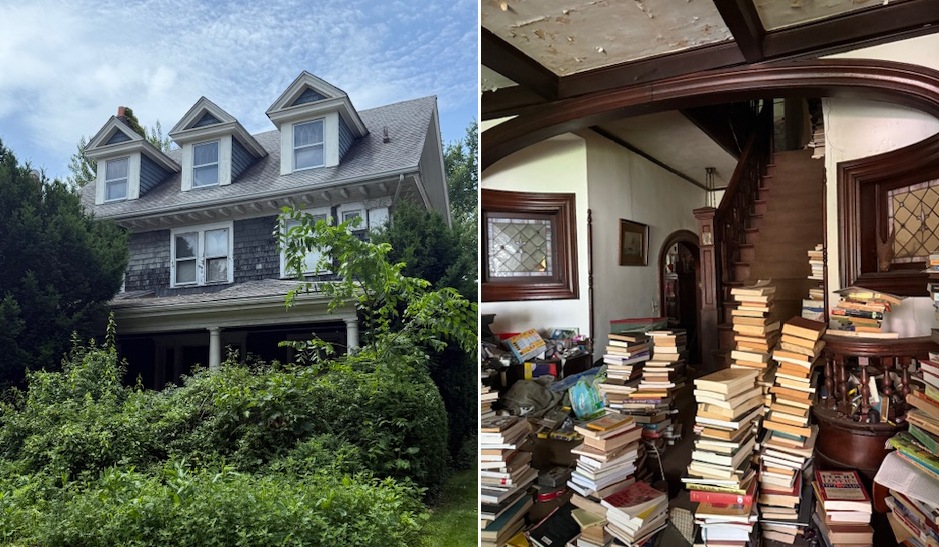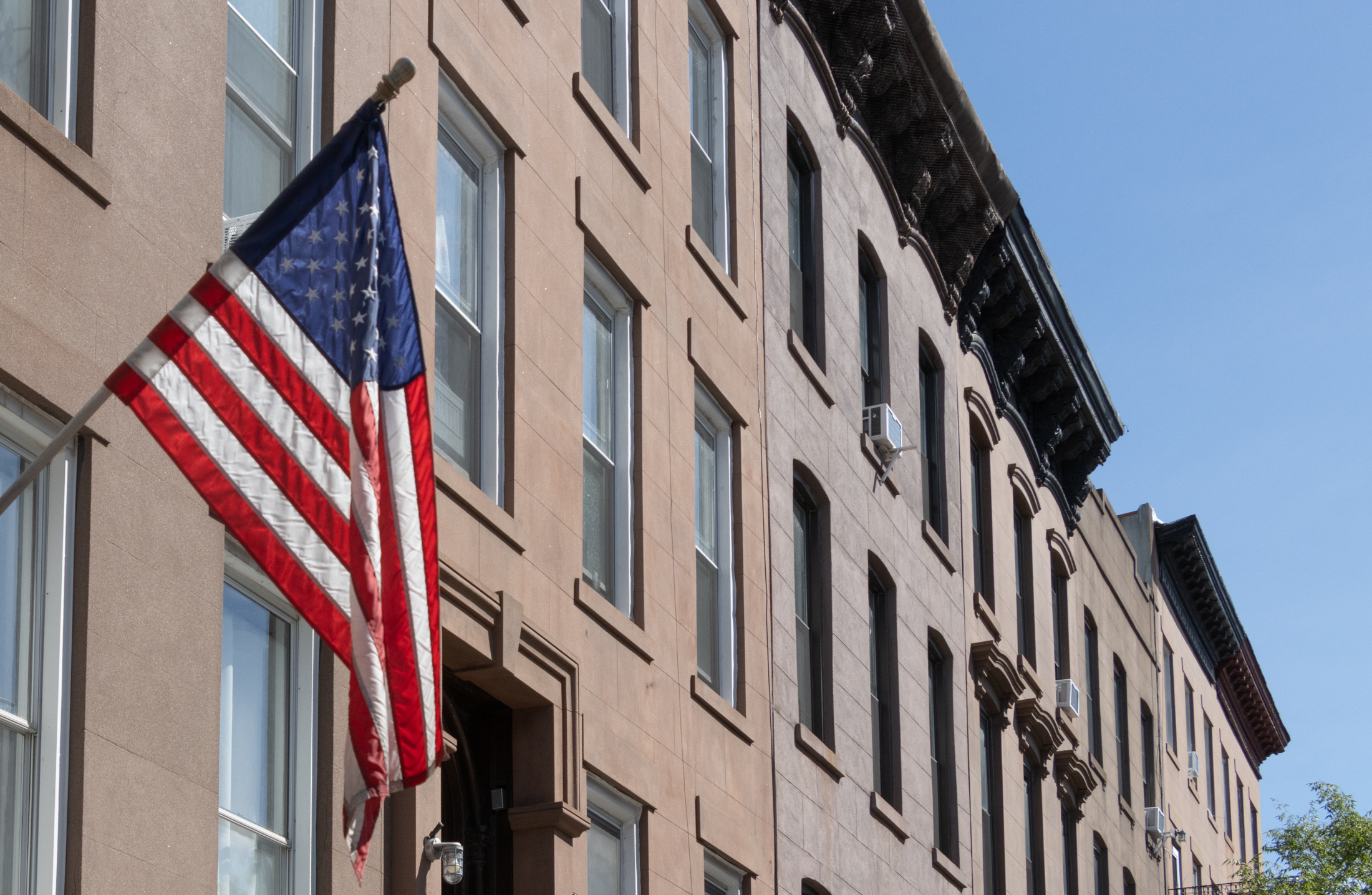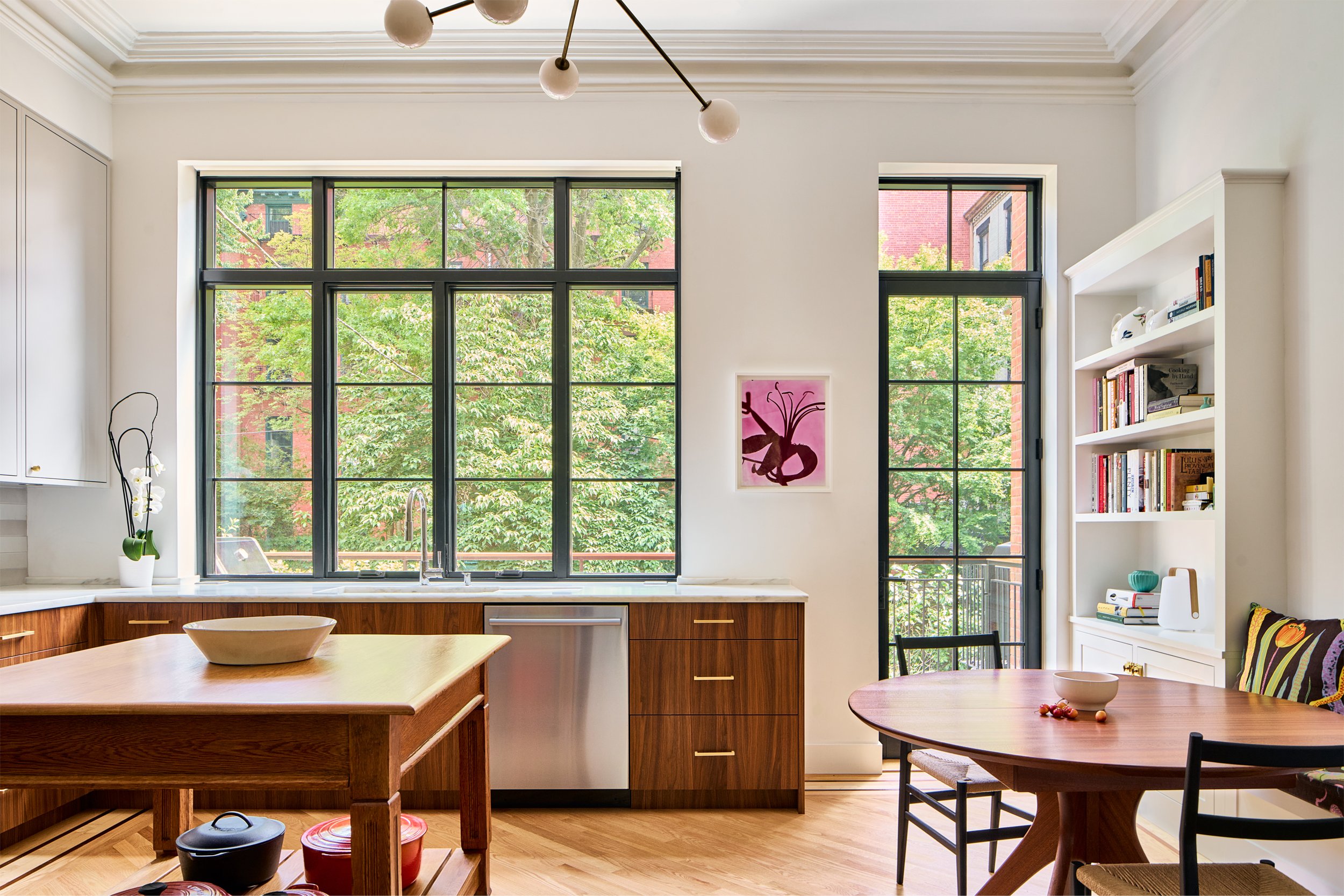Building of the Day: 229-231 Washington
Brooklyn, one building at a time. Name: Former Henry and John Van Glahn houses Address: 229-231 Washington Avenue Cross Streets: Corner Willoughby Avenue Neighborhood: Clinton Hill Year Built: 1892 Architectural Style: Romanesque Revival Architect: John G. Glover Other works by architect: Van Glahn Warehouse, corner Washington and Park Avenues, as well as other homes and…


Brooklyn, one building at a time.
Name: Former Henry and John Van Glahn houses
Address: 229-231 Washington Avenue
Cross Streets: Corner Willoughby Avenue
Neighborhood: Clinton Hill
Year Built: 1892
Architectural Style: Romanesque Revival
Architect: John G. Glover
Other works by architect: Van Glahn Warehouse, corner Washington and Park Avenues, as well as other homes and buildings in Brooklyn.
Landmarked: Yes, part of Clinton Hill HD (1973
The story: Clinton Hill is one of the great neighborhoods of Brooklyn, in the 19th century, home to the rich and famous, as well as the ordinary and working class. A great deal of the money in Clinton Hill came from the businesses located in nearby Wallabout, which had many factories and warehouses associated with the food industry, in addition to shipping and general manufacturing. The Wallabout Market, a huge wholesale and retail food market, was right there next to the Navy Yard, and the location was perfect. The proximity to the coastline of piers stretching from South Brooklyn to Greenpoint allowed for easy transportation of raw and finished materials. Manhattan was easily accessible, especially after the 1883 opening of the Brooklyn Bridge, and public transportation in the form of trolleys, and later the elevated trains, made this location convenient for workers and customers alike.
Williamsburg and its sugar refineries were literally down the road, so Wallabout became home to many businesses using sugar; such as candy factories, bakeries, biscuit factories and wholesale companies packaging and selling sugar, flour, spices, baking ingredients, canned goods, and other wholesale grocery goods. One of the largest of these grocery wholesalers was the Van Glahn Brothers Wholesale Grocery Company, located on Washington Avenue, between Park and Flushing Avenues.
John and Henry Van Glahn were one of a number of large and very successful wholesale grocers. They manufactured, packaged and stored their goods in a large warehouse designed in 1890 by architect John G. Glover. That warehouse was the topic of a BOTD, linked here. The brothers must have really liked Glover’s work, because they hired him to design twin houses for them on the corner of Washington and Willoughby Avenues, only a couple of blocks away from the business, a five minute walk to work.
The houses were built two years after the factory, in 1892. They replaced two houses that had stood on those lots earlier. One of them, the corner house at 231, was home to Miss Parmley’s English and French Boarding and Day School, as far back as 1873, when Clinton Hill’s first wave of prosperity was going on. This was a finishing school where wealthy young girls received an education that included music lessons and language skills, all necessary for proper debutantes and brides.
J.G. Glover’s designs for the houses are in the Romanesque Revival style, with the classic mixture of texture, materials and forms. The corner house used to have a four story bay on the Willoughby side of the house, which was removed sometime in the mid-20th century, as evidenced by the presence of newer brick and the modern windows. The original archway on the fourth floor opened up onto an enclosed loggia, with the rest of the bay beneath it.
John Van Glahn owned 231, where he lived with his wife and four children. He and his brother Henry had been born in Germany, and were two of the many German success stories in Brooklyn, establishing one of the largest wholesale grocery businesses in the city. Like many successful Germans, he had German employees, and one of them, a domestic named Minnie Kleindist, seems to have committed suicide in her room on the top floor, in 1897. She was found dead in her bed, with the gas on, and the door and window sealed with wadded up rags. There was no note or explanation.
John died here in the house, in 1906, of complications from appendicitis, and was only 47 years old. One of his sons, Herman H. Van Glahn, was a private in the Marine Corp. during World War I, and died of his wounds in September of 1918. He was 24 years old, had attended Princeton for two years, and then quit to go into the family real estate business of De Paix & Van Glahn. He had only been 11 when his father died, and was still living at home with his mother before enlisting. He had just written to his mother that “Most of the men would rather be at home in the United States, but we’re going to see this out before we come home.”
In 1887, the Brooklyn Eagle announced an estate auction at 229 Washington Avenue. All kinds of expensive goods and furniture were for sale, including Belgian carpets, ebonized furniture, pier mirrors and walnut wardrobes. The house was torn down afterwards for Henry Van Glahn’s new home. In 1903, D. Henry Van Glahn, the eldest son, got married here in the house. Henry Van Glahn died at the age of 60, in 1923.
Like the death of John Van Glahn’s son, in war, his brother Henry also lost a child much too early in her life. In 1905, daughter Florence, who had only been married to her husband, Edward H. Mangels, for three weeks, died here at her parents’ house of pneumonia. She was only 24. The Eagle mournfully wrote that the house that was so full of joy only weeks before would now be the site of her funeral, and those gathered for the wedding would soon gather to mourn her. She was buried in her wedding gown, and interred, like most of the family, in Green-Wood Cemetery. GMAP
(Photograph: Christopher Bride for PropertyShark)






What's Your Take? Leave a Comment